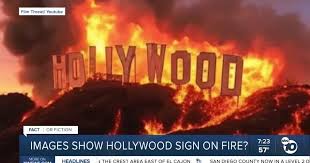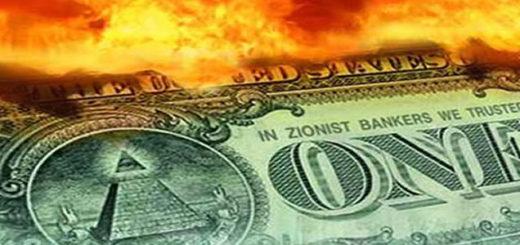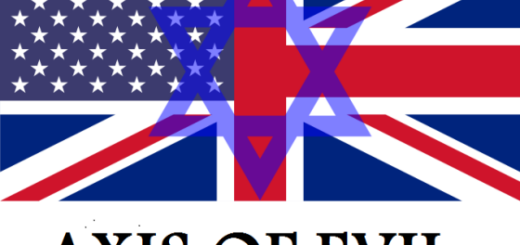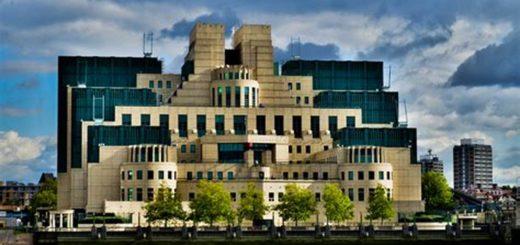America: #1 Killer in the World-What We’re Good at: Murder
The All-American Bombardier
Here is a list* of the countries bombed by the United States since the end of the Second World War:
| Afghanistan 1998, 2001- Bosnia 1994, 1995 Cambodia 1969-70 China 1945-46 Congo 1964 Cuba 1959-1961 El Salvador 1980s Korea 1950-53 Guatemala 1954, 1960, 1967-69 Indonesia 1958 |
Laos 1964-73 Grenada 1983 Iraq 1991-2000s, 2015- Iran 1987 Korea 1950-53 Kuwait 1991 Lebanon 1983, 1984 Libya 1986, 2011, 2016 Nicaragua 1980s Pakistan 2003, 2006- |
Palestine 2010 Panama 1989 Peru 1965 Somalia 1993, 2007-08, 2010- Sudan 1998 Syria 2014- Vietnam 1961-73 Yemen 2002, 2009- Yugoslavia 1999 |
Note that these countries represent roughly one-third of the people on earth.
This list makes it seem clear that the United States has been as bellicose as any other country in the history of the world. At least, it seems clear to non-Americans. Less clear are the reasons behind the bellicosity, the reasons that so few Americans realize how bellicose they are, and the reasons that so many Americans believe their country to be peaceable and benign.
Two concrete mechanisms can explain this situation, one animal and one historical, each reinforcing the other. First, Americans have the same hormones as all other homo sapiens. This renders them as intrinsically self-protective and agressive as any other people. Second, America’s ante-airline isolation led Americans to be uninterested in the rest of the world, so their education and sources of news have always tended to be insular and parochial, leaving them ill-informed. These mechanisms work together so that American foreign policies tend to be seeded in selfishness, cultivated in ignorance, and fertilized by fear. War is often the result. See Out of the Ashes for some blatant examples of this, or consider Laos.
Laos is a poor, land-locked country halfway around the world from the United States. It has no natural resources of any significance and hardly any people, only six million now and a mere two million during the 1960s. No country on earth could be or could ever have been less of a threat to the United States yet 40 years ago the White House and Pentagon managed to imagine one—a threat so dire and insidious that they had to keep it under wraps. They did not dare to explain it even to Congress, for fear Congress might not have permitted them to deal with it appropriately. They handled it in secret instead. To save America from that threat, an ad hoc air force run by the CIA dropped more explosives on Laos than the official air force dropped on Germany during all of the Second World War. Laotians saw more bombs dropped on them per capita than any other people in the history of the world.
Again, Laotians saw this, Americans did not. This was never on TV, this was done in secret. Most Americans still have no idea of the outrage their country committed.
The occasion for the bombing was a modest civil insurrection by a relatively few poor peasants against the king and kleptocrats who controlled the nation. The United States took the side of the latter and made war against the peasants, not only against those peasants who were fighting but also against those who were not. American planes rained down not just high explosives but also vast numbers of cluster bombs—aerial anti-personnel mines that are directed specifically against non-combatants. Those were (and continue to be) especially effective against children, because many of them do not explode when dropped but do explode when a child picks them up. This stragtegy had the predictable effect: it turned non-combatants into fighters and amplified the civil war. Eventually the American side lost. Needless to say, the United States suffered no ill consequences.
To anyone with a modicum of perspective, it was and remains inconceivable how anyone could have believed Laos to be a threat to the security of the United States, and it is even less conceivable how bombing the country could have been thought to be beneficial. However, Americans naively believe that a free press must be an informative press, so they remain ignorant of the world.
Reality is complex and ambiguous. It is most accurately outlined by knowledgable people willing to test their conclusions in public. In contrast, the reality of the White House and Pentagon is largely defined by employees of secret organizations, employees who are paid to be secretive if not paranoid. Those employees purvey information gleaned from professional previcators, a.k.a. spies and paid informants. The agents dealing with those spies and informants are likely to know too little of a culture and its language to order dinner in a native restaurant but they will have no problem believing that they can assess the accuracy and completeness of what is told to them and send it out as inside dope. This “information” is no more than glorified rumour but it is then not tested through the public scrutiny of independent experts, people who might actually speak the language of an informant, it is put through a military or quasi-military hierarchy. The people in that hierarchy who analyze the rumours may know even less—they may never have even visited the country—but they will know what their superiors will want to hear and they will want to write policy briefings believed by those on high.
In short, like president like tsar. The more top-secret dossiers that a ruler reads, the less informed and less sensible his decisions will become. If any information about another country is too secret to disclose, it is very likely to be wrong. It was not an accident that presidents and prime ministers and their top-level aides were virtually the only people to “know” about weapons of mass destruction in Iraq or to predict anything positive from Iraq’s destruction and occupation.
To see how this process works in the White House—to see how inaccurately American presidents are informed—read For the President’s Eyes Only by the Cambridge historian Christopher Andrew. To appreciate more fully the incompetence and outrageousness of the CIA, read Legacy of Ashes by the Pulitzer Prize-winning New York Times reporter Tim Winer.
—
*Dates through 2000 from Rogue State: A Guide to the World’s Only Superpower by William Blum
















